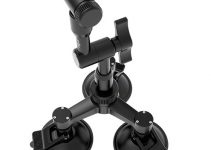Exposure can be a tricky element to get right when trying to shoot your footage. You may even find that sometimes your exposure is way too bright in post-production, despite having seen differently when on-location viewing through your camera monitors.
Luckily, YouTube channel YCImaging provides three ways to ensure that your exposure is spot-on every time you shoot your footage, all of which are simple and easy steps to save you time and frustration both in production and in post-production.
The first piece of wisdom is to use your camera’s built-in functions. These were designed by the manufacturers to assist filmmakers in setting up their shots. While the functions in your camera may vary depending on the manufacturer and camera model, here are the four most common built-in functions used to check exposure.
- Exposure Meter – This tool is designed to help you measure your exposure. It is usually found as the little meter bar in your viewfinder/monitor that has a zero in the center, and the numbers 1 and 2 on the left and right sides. The general rule of thumb is that when setting up the exposure, you’ll want to ensure that the meter is around the zero number ± 1 unit.
- Histogram – This is a graphical representation of the highlights, midtones, and shadows of your shot. The left side of the graph shows the shadows, the center the midtones, and the right side the highlights. When exposing your shot, use the histogram to try and balance your scene. Try to avoid lighting your shot in a way where the graph is leaning towards one side of the histogram to an extreme.
- Waveform – This is probably the least common of the four since it’s been regarded as a more professional feature that comes with more expensive cameras. It is essentially a histogram although the shadows, midtones, and highlights are spaced out vertically, rather than horizontally. For proper exposure, try to keep the waves in your waveforms as close to the center as possible and avoid those waves from reaching the top or bottom of the graph.
- Zebras – This is one of the more simple tools to check for exposure. When enabled, your camera will display a zebra stripe pattern on any part of your shot that is overexposed, which will help guide you into exposing your shots better.
The next thing to consider when aiming for proper exposure is to prioritize your subject. When filming, especially outdoors, there may be cases where you will inevitably end up with some areas over or underexposed. In this case, the main priority would be to ensure that your subject, the main focus of the shot, is at least properly exposed. For instance, if you’re trying to shoot a sunset, you will need to expose for the sunset, which will result in other areas of the image becoming darker than you’d prefer.
It’s good to try and experiment to see if you can find a balance between exposing for your subject and the surroundings although remember, try to expose whatever you really need the audience to pay attention to. if you don’t, you may misguide the audience which may affect the way you tell your story visually.
Lastly, if you have the cash, you may want to invest in a professional light meter. This handy device will measure the light of your shot and will even give you the proper aperture, shutter, and ISO settings you need to properly expose for your scene. There are many options out there, including ones that connect to your smartphone, although this comfort may come with a high price.
Yet, if you’re sick and tired of trying to eyeball your exposure and want accurate settings for your particular lighting situation, a light meter may save you time and potential production torture in the long run. Alternatively, you can try out the suggested Lumu Power by Lumulabs that plugs directly into the Lightning connector of your iPhone 7/7 Plus, thus turning it into an advanced and accurate light and color temperature meter in an instance. Either way, the above tips should be a great starting point and help you to get to grips with your camera exposure.
[source: YCImaging]
Disclaimer: As an Amazon Associate partner and participant in B&H and Adorama Affiliate programmes, we earn a small comission from each purchase made through the affiliate links listed above at no additional cost to you.




